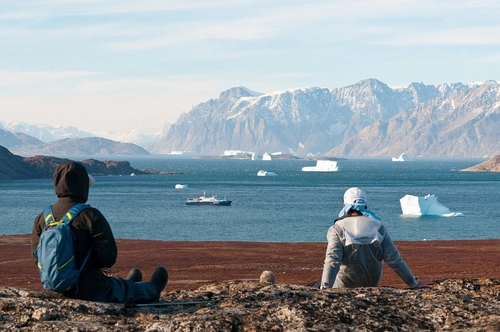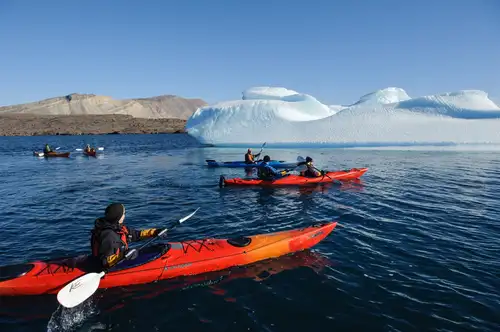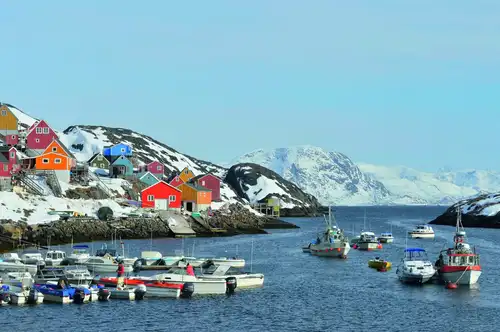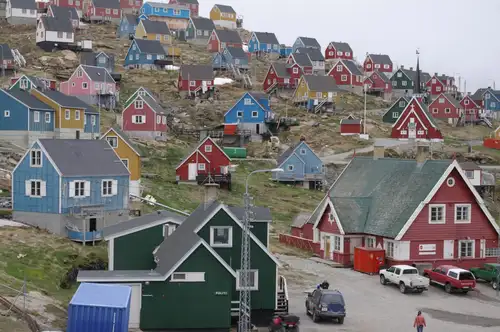Name: Black Guillemot, Guillemot à Miroir, Tystie (Cepphus grylle)
Length: 30 cm
Weight: 320 to 480 grams
Location: Arctic coastlines
Conservation status: Least Concern
Diet: Fish, crustaceans, marine invertebrates
Appearance: Black body with black bill, white patch on wings, red feet. Winter plumage is white with a darker back.
How do Black Guillemots feed?
Black Guillemots dive in shallow waters, using their wings to swim. They can stay underwater for about 2.5 minutes. Smaller prey is swallowed underwater, while larger prey is brought to the surface.
Are Black Guillemots social?
Outside mating season, they are usually found solo or in pairs, but they gather over feeding areas.
How fast do Black Guillemots fly?
They generally fly at about 20 km per hour.

What are Black Guillemot birthing rituals like?
Black Guillemots reach sexual maturity at 4 years and breed in colonies, especially in northern areas where food is abundant. Colonies can number up to 10,000 breeding pairs. Nests are made on rocky coastlines, often with pebbles, shells, or seaweed under overhangs. Males court females by strutting with exaggerated steps. Up to 2 eggs are laid, and both parents incubate and feed the chick. Chicks leave the nest after 1-2 months and head to the water.
How long do Black Guillemots live?
They live for about 11 years in the wild.
How many Black Guillemots are there today?
There are an estimated 400,000 to 700,000 individuals worldwide.
Do Black Guillemots have any natural predators?
Their young and eggs are preyed upon by rats, foxes, and minks.
7 Bountiful Black Guillemot Facts
- They are part of the Alcidae family, like Puffins.
- Some Black Guillemots show a preference for holding fish in a specific direction in their bills, possibly related to their feeding grounds.
- Their winter plumage gets whiter the further north they are found.
- They breed on Surtsey, a volcanic island off Iceland.
- There are five subspecies: Cepphus grylle arcticus, faroeensis, grylle, islandicus, and mandtii.
- Diving birds like Black Guillemots are found in colder regions because fish swim faster in warmer waters, while birds' swimming speed remains constant.
- Non-breeding Black Guillemots are often found in deeper waters.






Related Trips



Scoresby Sund: the Greatest Greenland Adventure

Northeast Greenland National Park

Five Birds You Might See on Your Greenland Cruise

Six Seal Species You Might See On Your Greenland Cruise

Greenland: Where the Kayak Was Invented

Amazing Greenland

Svalbard’s 12 Most Iconic Animals

Greenlandic Inuit Beliefs

Tracking Greenland’s Wildlife from Space

Discover the Scoresby Sund Fjord System in East Greenland

How and When Did Greenland Become Covered in Ice?

Seizing the Season: Spitsbergen’s Late Spring, Early Summer

Under the Greenland Ice Sheet

Greenland: East vs. West

10 Traits of Post-Ice-Age Greenland

Peaks, Fjords, and Auroras: 14 East Greenland Attractions

Kayaking In Greenland

The Norse Settlement of Greenland

The Arctic Hare: Easter Bunny






 20 Days / 19 Nights
20 Days / 19 Nights
